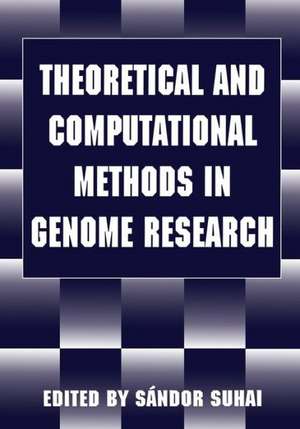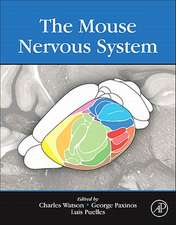Theoretical and Computational Methods in Genome Research
Editat de Sándor Suhaien Limba Engleză Paperback – 5 noi 2012
Preț: 395.85 lei
Nou
Puncte Express: 594
Preț estimativ în valută:
75.76€ • 78.80$ • 62.54£
75.76€ • 78.80$ • 62.54£
Carte tipărită la comandă
Livrare economică 15-29 aprilie
Preluare comenzi: 021 569.72.76
Specificații
ISBN-13: 9781461377085
ISBN-10: 1461377080
Pagini: 344
Ilustrații: IX, 330 p.
Dimensiuni: 178 x 254 x 18 mm
Greutate: 0.6 kg
Ediția:Softcover reprint of the original 1st ed. 1997
Editura: Springer Us
Colecția Springer
Locul publicării:New York, NY, United States
ISBN-10: 1461377080
Pagini: 344
Ilustrații: IX, 330 p.
Dimensiuni: 178 x 254 x 18 mm
Greutate: 0.6 kg
Ediția:Softcover reprint of the original 1st ed. 1997
Editura: Springer Us
Colecția Springer
Locul publicării:New York, NY, United States
Public țintă
ResearchCuprins
1. Evaluating the Statistical Significance of Multiple Distinct Local Alignments.- 2. Hidden Markov Models for Human Genes: Periodic Patterns in Exon Sequences.- 3. Identification of Muscle-Specific Transcriptional Regulatory Regions.- 4. A Systematic Analysis of Gene Functions by the Metabolic Pathway Database.- 5. Polymer Dynamics of DNA, Chromatin, and Chromosomes.- 6. Is Whole Human Genome Sequencing Feasible?.- 7. Sequence Patterns Diagnostic of Structure and Function.- 8. Recognizing Functional Domains in Biological Sequences.- 9. The Integrated Genomic Database (IGD)S: Enhancing the Productivity of Gene Mapping Projects.- 10. Error Analysis of Genetic Linkage Data.- 11. Managing Accelerating Data Growth in the Genome Database.- 12. Advances in Statistical Methods for Linkage Analysis.- 13. Exploring Heterogeneous Molecular Biology Databases in the Context of the Object-Protocol Model.- 14. Comprehensive Genome Information Systems.- 15. Visualizing the Genome.- 16. Data Management for Ligand-Based Drug Design.- 17. Picturing the Working Protein.- 18. HIV-1 Protease and Its Inhibitors.- 19. Density Functional and Neural Network Analysis: Hydration Effects and Spectrosopic and Structural Correlations in Small Peptides and Amino Acids.- 20. Computer Simulations of Protein—DNA Interactions.- 21. The Role of Neutral Mutations in the Evolution of RNA Molecules.- 22. How Three-Fingered Snake Toxins Recognise Their Targets: Acetylcholinesterase-Fasciculin Complex, a Case Study.- 23. Protein Sequence and Structure Comparison Using Iterative Double Dynamic Programming.









